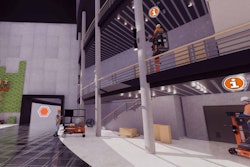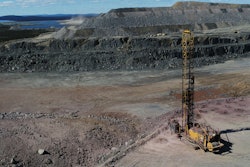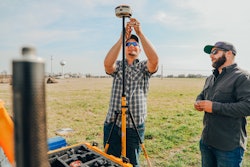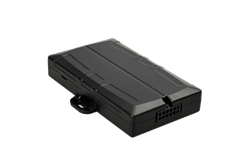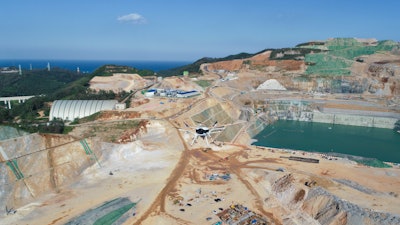
A Doosan Group division has joined with automated analytics provider AI Clearing to provide detailed jobsite data for large-scale construction projects.
The partnership takes advantage of Doosan Mobility Innovation's hydrogen-powered drones, reportedly the first-of-their-kind. Capable of staying airborne for more than 2 hours, the drones alleviate the need for multiple batteries and launch points required by lithium-ion polymer drones and stay airborne four times longer, says AI Clearing. And when power does get low, the hydrogen tanks can be quickly replaced, allowing the drones to be running again in 3 minutes.
Not only are the DMI drones capable of being in the air longer, they can also carry more payload, says Taco Engelaar, chief commercial officer, AI Clearing. "There's a huge synergy with their drone hardware and our software," he says.
For its part, AI Clearing says its artificial intelligence-powered system leverages automation in comparing drone images with schedules and designs, providing teams with full visibility of the work that’s been completed and enabling them to spot any discrepancies with the design.
While drones are commonplace on jobsites, contractors are not getting much value from the data obtained by them, Engelaar says. "The digital surface models don't really mean much," he says. AI Clearing's software uses what he calls a fully automated progress-tracking solution that analyzes the drone data along with project design data.
The partnership is targeting large construction projects, including roads, bridges, high-speed rail, solar-farm and port construction.
Companies are "increasingly demanding longer flight time," says Doo Soon Lee, CEO of Doosan Mobility Innovation. "This is the case for sites difficult to access in one flight; sites where efficiency is significantly reduced with battery drones due to large scale, or when you want to perform multiple missions using long flight time.”
Joint AI Clearing/DMI future projects could involve near real-time reporting as the drone flies over a site, something that now takes about a day because of the data processing and analytics involved. "We're looking at ways to actually install our solution directly onto the drone and then directly transmit our progress analytics in real time," Engelaar says, taking advantage of the drone's heavier payload capabilities.
The joint effort will also focus on R&D with an aim to enable edge computing for construction progress that was previously impossible due to limitations in computing power and the distance capabilities of most drones, AI Clearing says.





